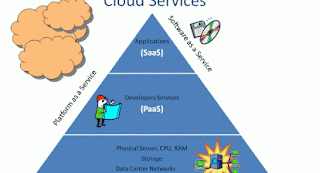Web development st louis
Introduction
With the increasing number of mobile phones, os's and their versions, screen sizes and their resolutions, the need for mobile browsers to gain access to web sites also grows. The challenge then is to ensure just one version of the origin code of user interface designs on the server-side can render the internet page correctly on different screen sizes. Thus, mobile-enabling web apps on tablets, smartphones, phablets, etc. is not just a Web development st louis matter of viewing exactly the same web site (that was originally created for a desktop/ laptop) on a mobile browser, as it will result in horizontal and/ or vertical scroll bars, making the page unusable. Mobile enablement of a web application requires a different approach to create it usable on the range of device form factors. The perfect solution is is to really make the app suitable for every device that runs a web browser.
Responsive Web Design (RWD), which simply means design your app by running some "media queries" that may identify the device's screen size and resolution is really a key enabler! However, RWD is not as simple as it looks! Everything happens from the background to create sites so very adaptive that the buyer doesn't have to switch between apps or URLs.
Let's see what RWD provides!
What is Responsive Web Design (RWD)?
In RWD, all visual components of a web site become proportional to the full page size by using fluid, proportion-based grids, flexible images and CSS3 media queries. Fluid layouts could possibly be the very first aid whereas media queries are useful for adding flavors to mobile devices. The RWD concept is best used to minimize efforts & money, multiple browser support, optimal performance and heavy content. And to achieve this, the look needs to be system-driven, as compared to pages-driven.
Some rules that must be followed include: check the content, make use of a small mobile device to create the look base, apply features for a browser, make use of a modular approach and design a framework scalable across business verticals. Managing corporate branding UI themes as a part of this framework provide a whole lot more flexibility when serving this as an answer to customers.
Examples of ready frameworks, with the likelihood of including some customization include Bootstrap, Skeleton, The Goldilocks approach, Foundation, etc...
The main element is to comprehend & follow the guidelines stated below:
Our pages should render legibly at any screen resolution
We mark up one set of content, rendering it viewable on any device
We should never show a horizontal scrollbar, whatever the window size
To reach the above mentioned, one must use the following principles that derive from CSS:
Flexible layouts - Use proportional sizes to fit to every page
Flexible images and media - Use CSS to avoid images or media overflow out of the containing elements
Media queries - Use the CSS3 media queries module to detect media features like screen resolution and respond accordingly
With the increasing number of mobile phones, os's and their versions, screen sizes and their resolutions, the need for mobile browsers to gain access to web sites also grows. The challenge then is to ensure just one version of the origin code of user interface designs on the server-side can render the internet page correctly on different screen sizes. Thus, mobile-enabling web apps on tablets, smartphones, phablets, etc. is not just a Web development st louis matter of viewing exactly the same web site (that was originally created for a desktop/ laptop) on a mobile browser, as it will result in horizontal and/ or vertical scroll bars, making the page unusable. Mobile enablement of a web application requires a different approach to create it usable on the range of device form factors. The perfect solution is is to really make the app suitable for every device that runs a web browser.
Responsive Web Design (RWD), which simply means design your app by running some "media queries" that may identify the device's screen size and resolution is really a key enabler! However, RWD is not as simple as it looks! Everything happens from the background to create sites so very adaptive that the buyer doesn't have to switch between apps or URLs.
Let's see what RWD provides!
What is Responsive Web Design (RWD)?
In RWD, all visual components of a web site become proportional to the full page size by using fluid, proportion-based grids, flexible images and CSS3 media queries. Fluid layouts could possibly be the very first aid whereas media queries are useful for adding flavors to mobile devices. The RWD concept is best used to minimize efforts & money, multiple browser support, optimal performance and heavy content. And to achieve this, the look needs to be system-driven, as compared to pages-driven.
Some rules that must be followed include: check the content, make use of a small mobile device to create the look base, apply features for a browser, make use of a modular approach and design a framework scalable across business verticals. Managing corporate branding UI themes as a part of this framework provide a whole lot more flexibility when serving this as an answer to customers.
Examples of ready frameworks, with the likelihood of including some customization include Bootstrap, Skeleton, The Goldilocks approach, Foundation, etc...
The main element is to comprehend & follow the guidelines stated below:
Our pages should render legibly at any screen resolution
We mark up one set of content, rendering it viewable on any device
We should never show a horizontal scrollbar, whatever the window size
To reach the above mentioned, one must use the following principles that derive from CSS:
Flexible layouts - Use proportional sizes to fit to every page
Flexible images and media - Use CSS to avoid images or media overflow out of the containing elements
Media queries - Use the CSS3 media queries module to detect media features like screen resolution and respond accordingly




Comments
Post a Comment